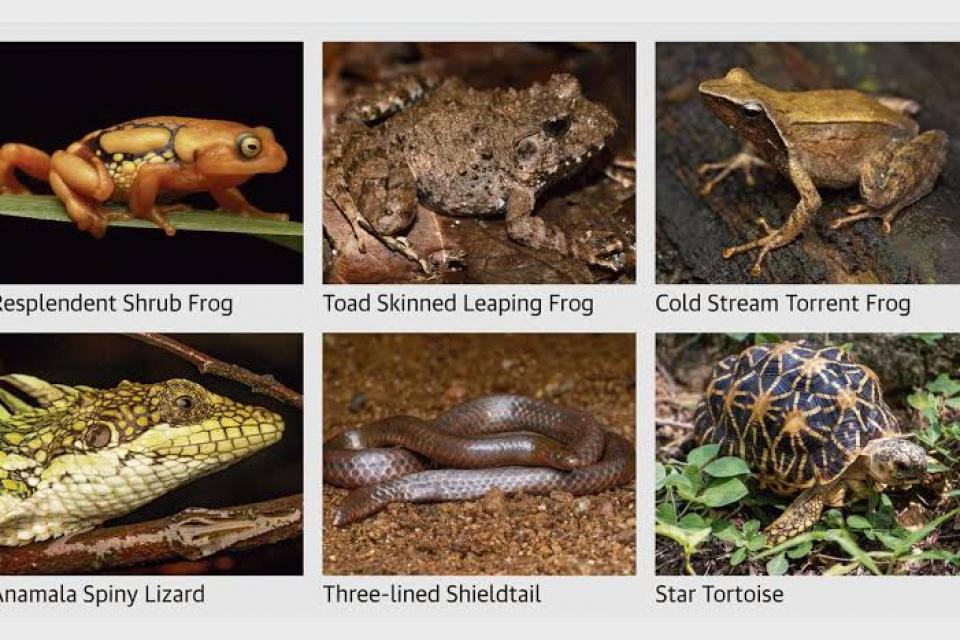67 Species of Reptiles, 59 Amphibians Recorded in Wayanad Forest Survey
Context
The first herpetofauna survey, which just came to a conclusion in Kerala’s South Wayanad Forest Division, identified as many as 67 species of reptiles and 59 species of amphibians.
Diverse Species:
The survey revealed a herpetofauna in the South Wayanad Forest Division that was rich and diverse, with a total of 67 species of reptiles and 59 species of amphibians.
New Findings:
Four amphibian species and three reptile species were found during the survey for the first time in the forest division. This emphasizes the value of ongoing investigation and studies to comprehend and catalogue the region’s biodiversity.
Endemic Species:
48 amphibians and 21 reptiles out of the 126 species found are indigenous to the Western Ghats. This highlights how important the Western Ghats are as a centre of amphibian and reptile diversity.
Collaboration:
Nearly 70 frontline forest staff members and over 100 volunteers from various universities across the state participated in the survey. The successful completion of thorough biodiversity surveys and conservation initiatives depends on this cooperative effort.
Key Findings:
The Starry Night Frog, Miniature Night Frog, Malabar Torrent Toad, and Red Stream Toad are a few of the prominent amphibian species that were discovered during the study. The Miniature Night Frog is the smallest frog in the nation. It was also possible to see the Naked Dancing Frog, which was previously only known to exist in the Wayanad Wildlife Sanctuary.
Diversity of Reptiles:
The survey found 67 species of reptiles, 21 of which were specific to the Western Ghats. Among the reptiles discovered were the Wayanad Dravidogecko, Nilgiri Spiny Lizard, Nilgiri Forest Lizard, and Shieldtail snake.
Conservation significance:
The existence of these rare and frequently endemic species shows the South Wayanad Forest Division’s importance for conservation. Protecting these ecological assets requires conservation measures.
Outreach and Education:
Broader outreach and education are necessary, according to the researchers, to dispel myths and anxieties surrounding reptiles and amphibians. To ensure the survival of these species, public knowledge is essential.
Richness in Biodiversity:
The South Wayanad Forest Division was recognized for having a level of biodiversity that was on par with well-known sanctuaries. The region’s rich biodiversity is influenced by the region’s different environments.
Conclusion :
In conclusion, a variety of distinctive amphibian and reptile species were discovered during the herpetofaunal study in the South Wayanad Forest Division. These results highlight the necessity of ongoing study and conservation initiatives to safeguard these natural gems and their habitats.





